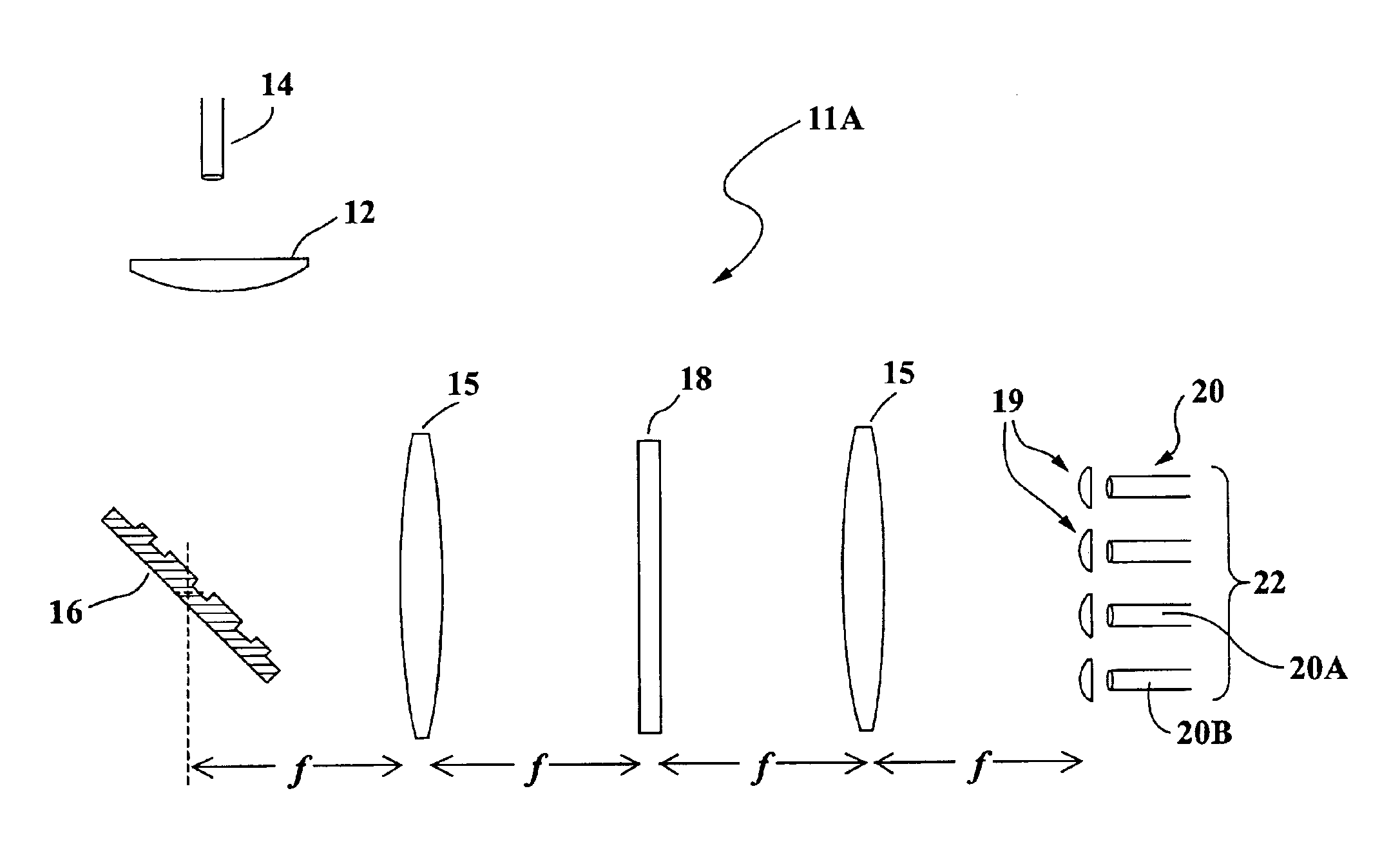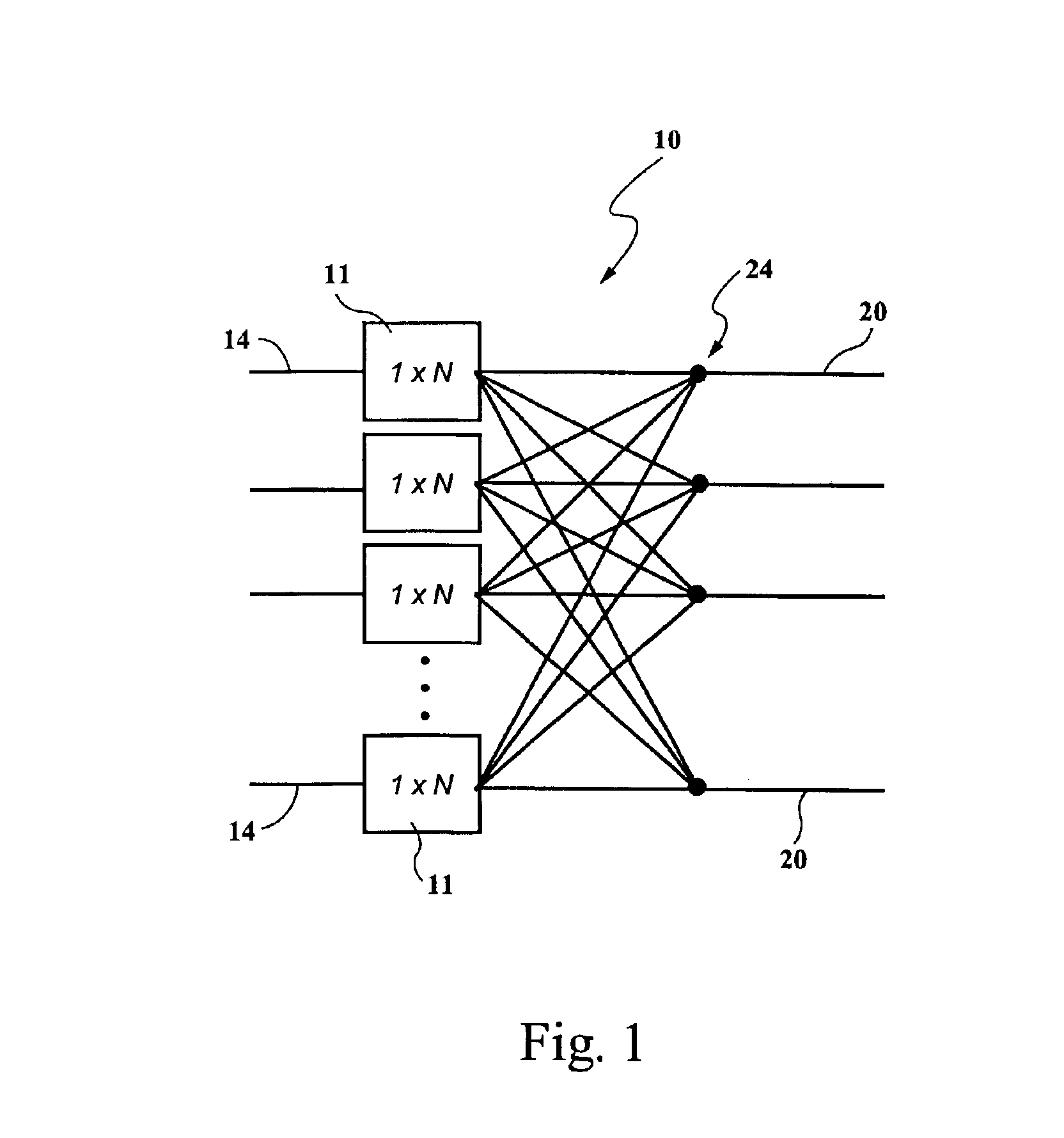Optical cross-connect switch
- Summary
- Abstract
- Description
- Claims
- Application Information
AI Technical Summary
Benefits of technology
Problems solved by technology
Method used
Image
Examples
an embodiment 111c
An embodiment 111C for implementing an (L×K)-switch (FIG. 9A) directly is depicted in FIG. 13. Light from each fiber 114A in an array of L input fibers 115 is collimated by its own micro-lens or GRIN lens 112A and directed onto its own the state selector 116A. Each state selector 116A imposes on its outgoing wavefront the same phase-only wave-amplitude profiles as before. The L state selectors 116A can either be individual units, or they can be integrated into a single unit, where different portions of a large SLM are used to spatially modulate the wavefronts from each input fiber. The output of all the state selectors 116A then enters a combiner 300 that projects the exit plane of each state selector 116A into the input aperture of the beam shaper 118. The combiner is an adaptation of DOEs that have been designed for implementing free-space optical interconnects for computer systems. Beam shaper 118 can use any of the previously-described DOEs. In the embodiment of FIG. 13, the wav...
PUM
 Login to View More
Login to View More Abstract
Description
Claims
Application Information
 Login to View More
Login to View More - R&D
- Intellectual Property
- Life Sciences
- Materials
- Tech Scout
- Unparalleled Data Quality
- Higher Quality Content
- 60% Fewer Hallucinations
Browse by: Latest US Patents, China's latest patents, Technical Efficacy Thesaurus, Application Domain, Technology Topic, Popular Technical Reports.
© 2025 PatSnap. All rights reserved.Legal|Privacy policy|Modern Slavery Act Transparency Statement|Sitemap|About US| Contact US: help@patsnap.com



